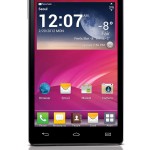
As we rely more on our smartphones for work and play, our tendency to fire up a mobile search box to look for information naturally increases.
According to Adobe’s latest Digital Index report, mobile search now accounts for nearly 30 percent of mobile visits to websites in the Asia-Pacific region. The company analysed 2.5 billion visits to the websites of over 125 companies in the finance, media, retail and travel industries. In Singapore, 20 percent of mobile visits already come from mobile search engines.
Not surprisingly, Google continued its dominance in mobile search across the region. The Internet giant accounted for 70 percent of all mobile search traffic, with highest market shares in Australia and India.
When it comes to search quality, which Adobe determines through bounce rate (percentage of single-page visits) delivered by each search engine, Microsoft’s Bing and local search engines lead the way. Lower bounce rates are better since they indicate that users are delving deeper into your website after landing on your site through a search engine.
Google delivered the highest bounce rate in the study at 37 percent, while Bing’s bounce rate was lower at 29 percent. South Korea’s Naver and China’s Baidu also delivered better quality results in their home markets, with bounce rates of 29 percent and 34 percent respectively.
“Bing’s performance in traffic quality offers it the potential to become a stronger competitor, but only if it increases the overall volume of mobile search referred traffic,” the report noted.
While Bing’s superior results may be influenced by the quality of its smaller audience rather than solely by its search algorithms, its quality advantage is unlikely to lead to a higher market share, unless Microsoft can convince more mobile device makers to adopt Bing as the default search tool. The upcoming release of Windows Phone 8 and Surface tablet could also increase Bing’s footprint in the region, Adobe noted.
Adobe’s report also threw up an interesting finding: Google’s competitive advantage due to the growing penetration of Android phones is less of a factor in its search market share than anticipated.
In China and South Korea, where Android penetration is highest in the region, local search services Baidu and Naver are usually set as the default setting for mobile search, even on Android devices.
In markets such as Singapore, Australia and New Zealand where Android penetration is lower, Google still dominates because it is the default mobile search engine on iOS devices, though that could change if Apple chooses to replace or augment Google search with competing engines. Apple is already planning to add Baidu as a search engine option in China.
So what do the findings mean for marketers? Adobe offers four points to consider:
1. Because of the increasing number of mobile visits, traffic from mobile search will increase in importance. Visitor acquisition programs should be optimised for mobile search traffic separately from PC search traffic.
2. Differentiated, country-specific strategies are critical. Mobile search penetration and device preferences varies by country as well as industry, making Apac a complex region to optimise. Marketers can boost acquisition of mobile traffic by including a country-specific and device-specific search engine marketing strategy and consider optimising for local players such as Naver and Baidu.
3. Measuring traffic quality will further improve results. Significant differences in bounce rate by country and by industry, suggest that marketers should identify and track relevant quality metrics such as bounces, conversion, revenue per visitor, time spent on site or pages per visit to further optimise search engine traffic.
4. Marketers should revisit their search marketing strategies regularly because environmental, technological and strategic disruptions may result in rapid and influential changes.






